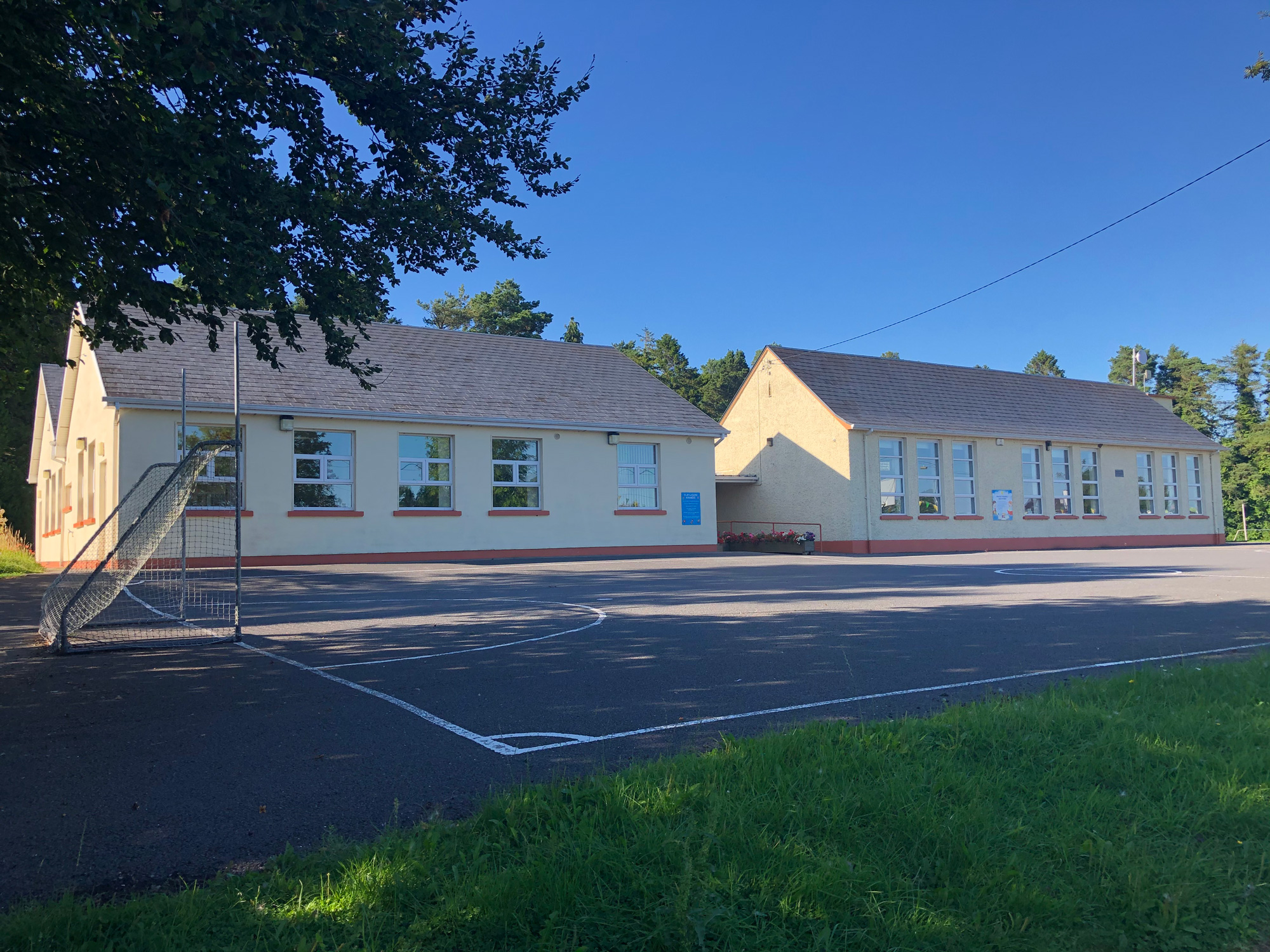Our school strives to provide its students with education for life and living. Every effort is made to provide a curriculum suitable to the abilities, aptitudes and interests of the children.

Our School
We were lucky enough to get Government Grant Aid in 2008 to extend and renovate our school. We added two new classrooms, a computer room, a resource room and a staff room. We converted three of the old classrooms into two good sized rooms and we restored the PE hall to its original size as over the years we had sectioned it off twice to include a classroom and a computer room/office. We have developed a carpark at the left of the extension and held an open day on June 7th last to show our appreciation for all that has been done for us by both the Government and the local community who have been very generous and supportive of us in our fund-raising activities. The pupils use the carpark to enter and leave the school grounds making it a more safe environment for everyone.
Looking Back
When I joined the staff of Castledaly N.S. in 1958, it was a three-teacher school with the Principal teacher and two assistants. They made up the entire staff of the school. There was no Board of Management. The local priest acted as manager.
I can’t remember the number of pupils on roll in 1958, but some time in the early 60’s there were 120 pupils taught by three very over-worked teachers!
I didn’t find it easy to cope with 35 pupils comprised of 3 standards, second, third & fourth classes.
The school building was very basic, 3 classrooms, 2 cloakrooms and girls’ & boys’ toilet areas.
Central heating was unheard of. The only sources of warmth were open fires in two rooms and a turf range in the infant room.
It wasn’t always easy to get the turf burning brightly on a frosty winter’s morning –most of the heat went up the chimney. We had to make do and we did!
By lunchtime the range had heated up for the infants and the teacher had warmed the children’s bottles of tea, cocoa etc. and mopped up those that had over heated and burst!
The above memories sound negative and lonely.
Now I accuse myself of overlooking the good times of which there were some.
When one starts with so little it’s great when the Inspector compliments the girl in fourth class whose poem “The Cat” took his fancy. Also the excellent penmanship of the girl in third who was asked to write a copy of “The Cat” for him to take back to the Department!
Mona O’Connell May 2010
Kilcleagh National School, erected in 1951 and consisting of three small class rooms, two cloak rooms, boys’ & girls’ toilets and a staff toilet, reflected school buildings of the time.
Great credit is due to the staff who worked within such limited space and prepared generations of children for life.
In the early ‘80s an all-purpose room was constructed through local effort without any funding from the Department of Education.
This extension reflected local goodwill and generosity.
In 1990, due to an increase in numbers, a section of the all-purpose room was converted into a class room.
In 2001 there was a further division of the remaining space to provide a computer room.
Even though resource hours had been sanctioned, there was no space in the school for a resource teacher.
There was no staff room and there was no work area for a secretary despite the fact that secretarial funding was being provided.
The existing class rooms were too small and did not meet Health and Safety requirements.
There was also a safety issue at the school gate where children were being dropped off and collected.
It was from this background that a move was made in 2002 to seek funding from the Department of Education to improve the situation.
Plans were drafted in 2004 by the late Bob Traynor and were presented to the Department.
There was an instant response. There was nothing but goodwill, co- operation and support shown.
That attitude was reflected too by the County Manager, Mr. Daniel McLoughlin, encouraged by Mr. John Dolan who both wished to have the Council associated with the project in the interest of safety.
The result is what we have today and for which we are extremely grateful to everyone involved.


